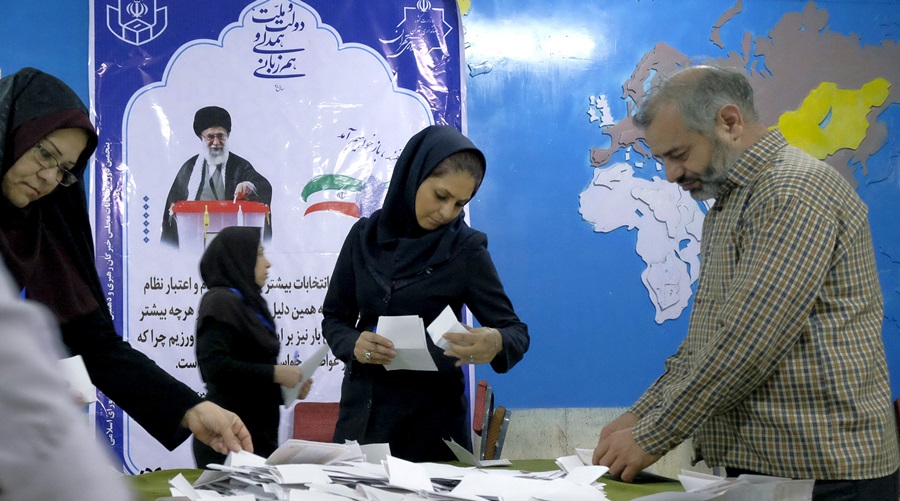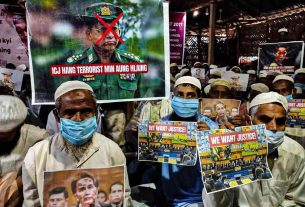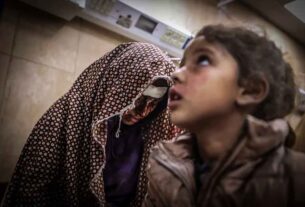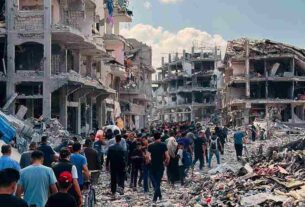Mon 24 February 2020:
Iran’s interior ministry announced a 42.57 percent voter turnout in Friday’s parliamentary election, the lowest turnout since the 1979 Islamic Revolution.
The interior ministry released the figure on Sunday with unprecedented delay, but did not give a reason for the wait.
The decision by Iranian authorities to hold back the final voter turnout count “means that they are having a hard time engineering vote results,” according to Behnam Taleblu, an expert on Iran at the Washington-based think tank Foundation for Defense of Democracies (FDD).
Taleblu said the initial state figure of voter turnout is highly suspect, and that he believes turnout was even lower than 42.57 percent.
The decision by so many Iranians to boycott this election “is indicative of a dissatisfaction with the system and the failure of reform,” said Taleblu in an interview with Al Arabiya English.
Videos and images shared online on Friday showed empty polling stations in several Iranian cities.
Users online also pointed out that Iran’s state TV attributed the same images of voters to several cities in the country in an attempt to exaggerate voter participation.
Iranian opposition groups and activities, inside and outside the country, had called for boycotting the parliamentary election.
Imprisoned Iranian human rights activist Narges Mohammadi called on her compatriots to boycott the parliamentary election earlier this month to honor those killed in the anti-government protests last November, and not give the regime legitimacy.
An additional 12 Iranian imprisoned female activists also called on their compatriots to boycott the parliamentary election, saying that those who vote would be “endorsing the regime and its crimes.”
Reza Pahlavi, the son of Iran’s last monarch late Shah Mohammad Reza Pahlavi, also called for boycotting the election, saying that “voting in this regime’s sham elections serves to confer legitimacy upon an illegitimate system.”
The Iranian regime’s violent crackdown on protesters during last November’s anti-government protesters, as well as its belated admission to shooting down a Ukrainian civilian airliner on January 8 after days of denying responsibility, are two key recent events that are likely to have contributed to a historically low turnout.
Protests broke out across Iran last November after the government introduced gasoline rationing and price hikes. Regime forces killed 1,500 people during the protests at the orders of Supreme Leader Ayatollah Ali Khamenei, according to a Reuters report.
Iran’s military shot down a civilian airliner two months later, killing all 176 people on board.
The Islamic Republic denied responsibility for three days before admitting to downing the plane under international pressure, triggering a new wave of protests in the country.
The disqualification of thousands of candidates by the Guardian Council added to an already high level of public discontent in the country.
The Guardian Council is a body made up of 12 clerics and jurists which determines the eligibility of candidates according to criteria such as their commitment to Islamic practices, their loyalty to Velayat-e Faqih, Iran’s religious system of law, and the Islamic Republic.
Nonetheless, Khamenei urged Iranians to vote, saying that voting is a “religious, national, and revolutionary duty.”
However his call for participation in the election was rejected by at least 57 percent of eligible Iranian voters, based on the turnout figure announced by the interior ministry.
The elections took place under the threat of the coronavirus, which has killed 18 people in Iran, which reported its first case of the virus two days before the national polls.
Think your friends would be interested? Share this story!





